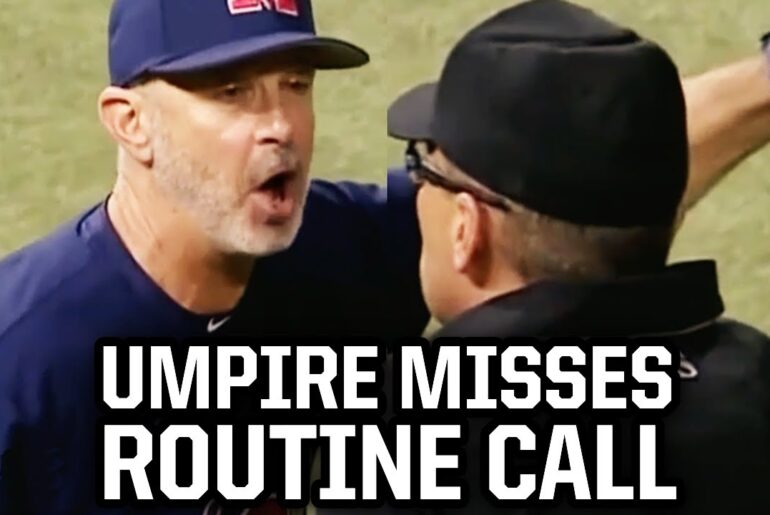At the start of the inning, Logan Webb’s swift pace caught both the broadcasters and viewers off guard. The first pitch went unnoticed, as the broadcasters struggled to keep up with Webb’s rapid delivery. The unfamiliarity with the new rules, possibly stemming from the spring training period, caused some broadcasters to miss the initial pitch. As the count progressed to \”0-2\” due to a foul ball, the game continued at a fast pace, with Anderson ready and set in the batter’s box.
The Time Out
During the fast-paced game, Anderson made contact, resulting in a hit down the line. He promptly approached the umpire, affirming his readiness to continue without taking a time out. The umpire acknowledged Anderson’s assurance and allowed him to step back into the batter’s box. Webb, prepared and waiting, faced Anderson, who returned to his position. However, as the game progressed, Anderson briefly stepped out of the batter’s box to catch his breath after fouling off a few more pitches.
The Umpire’s Decision
Confusion arose when the umpire declared Anderson out after the pitcher’s delivery. The umpire believed that Anderson had already taken his allotted time out and was not entitled to another one. Anderson, on the other hand, argued that the issue at hand was not related to a time out. According to the new rule, both batter and pitcher must make eye contact, signaling their readiness to proceed within the time limit.
Analyzing the Rule
To understand the situation better, let’s examine the moment when Webb initiated his delivery. It becomes apparent that Anderson was not reasonably set, as he had not made eye contact with Webb. Furthermore, Anderson’s feet were not adequately positioned, and his bat was not fully raised. In contrast, a previous pitch showed Anderson in a more prepared stance, with both feet set and his hands properly gripping the bat. This stark contrast supports Anderson’s claim that he had not yet signaled his readiness to the pitcher.
Umpire’s Challenge
Umpires currently face the challenge of preventing players from exploiting the clock and manipulating the system. Their responsibility to enforce the rules has become more complex, with various new regulations introduced. Although the umpire in this situation erred in his decision, it is important to recognize the difficulties umpires face in upholding the integrity of the game.
Confrontation and Ejection
Beyond the controversy surrounding the pitch clock violation, another confrontation unfolded between Anderson and Webb. Anderson’s frustration with Webb’s quick pitching led to an ongoing exchange between the two players. This altercation resulted in Anderson vehemently expressing his displeasure, leading the umpire to call a strike on an incredibly outside pitch. Webb, exasperated by the ongoing exchange, pleaded with Anderson to stop berating him. The umpire intervened and warned Anderson to cease his actions. However, a miscommunication ensued, and the umpire mistakenly ejected Anderson from the game, confusing both the players and the dugout.
The Aftermath
The dugout was astounded by the umpire’s decision to eject Anderson, as it was evident that Anderson was not the target of the umpire’s warning. Confusion mounted as the players questioned the umpire’s judgment and decision-making process. Webb, caught up in the chaos, expressed his discontent with the situation, criticizing the perceived weakness and softness of those involved.



